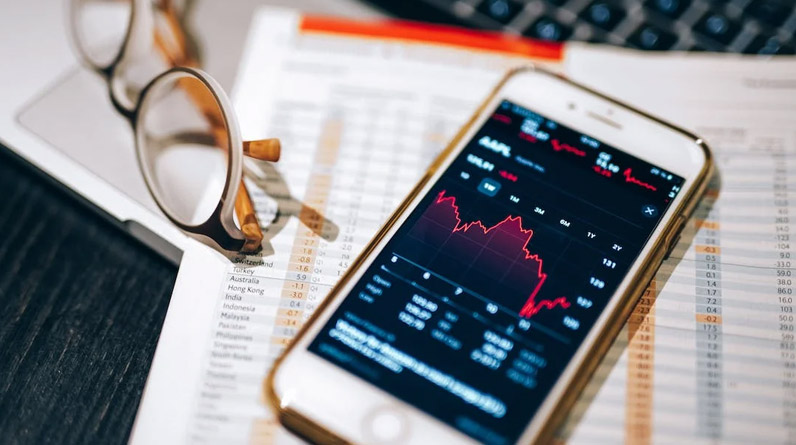Futures trading is a popular form of investing in which traders speculate on the future price of commodities or financial instruments. While the potential for high returns can be alluring, it is important for traders to manage their risk effectively to minimise potential losses. This is where risk management comes in.
In this article, we will examine what risk management is in the world of trading and explore some best practices for managing risk in futures trading.
What is risk management?
Risk management in futures trading refers to the process of identifying, assessing, and controlling the various types of risks that can arise during the trading process. Futures trading involves a significant degree of uncertainty, and as such, there are various risks involved that traders must be aware of and manage effectively.
The importance of risk management
Effective risk management in futures trading is critical for several reasons.
Firstly, it helps to minimise potential losses and protect your capital as a trader. Secondly, it allows you to take calculated risks and make informed trading decisions, rather than simply relying on luck or chance. Thirdly, it helps you manage your emotions. A solid risk management strategy in place can help you avoid making impulsive or irrational decisions that can lead to losses. Finally, it can help you build a long-term profitable trading strategy and achieve your financial goals when used correctly.
Common risks encountered when trading futures
Before we discuss the best practices for futures trader, it is important to acknowledge and understand the common risks encountered. These include market risk, leverage risk, liquidity risk, operational risk, and counterparty risk. Below, we take a closer look.
Market risk
Market risk refers to the potential for loss to occur due to the volatility of the futures market. It is the most common and prevalent risk in all forms of trading, as all forms of trading expose traders to an unpredictable market.
The price of futures contracts can fluctuate widely, and this can result in significant losses for traders who take on too much risk with their capital.
Leverage risk
Futures trading involves the use of leverage, which means that traders can control a large position with a relatively small amount of capital. While leverage can amplify gains, it can also magnify losses. This means that traders who use excessive leverage can quickly find themselves in trouble if the market moves against them.
Liquidity risk
Liquidity risk is the risk of not being able to execute trades or exit positions in a timely manner due to insufficient movement in the futures market. Liquidity can vary widely in futures trading, depending on the contract being traded and the time of the day.
If you are unable to execute your trades or exit positions quickly, you may be forced to take on additional risk. You may also risk holding losing positions for longer than you would like.
Operational risk
Operational risk refers to the risk of losses due to operational failures, such as technique issues or errors in trade execution. If you are not careful when placing trades or rely too heavily on technology without proper backup plans, you may be vulnerable to operational risks.
This is where the importance of opening a futures trading account with a reliable broker comes in. Working with a reputable and reliable broker can substantially decrease the risks of running into technical problems. It can also increase your chances of getting the help you need if you do encounter any problems.
Counterparty risk
Finally, counterparty risk is the risk that the other party in a futures trade will not fulfil their obligations. This risk is inherent in most forms of derivative trading, such as options and CFD trading, that involves the use of contracts. In futures trading, this risk is particularly relevant when trading with less established brokers or when trading in markets with lower liquidity. If counterparties fail to honour their obligations when trading, you may risk suffering losses.
5 risk management techniques for futures traders
Trading futures carries inherent risks, as mentioned above. You should therefore carefully consider these risks before entering the market and take steps to manage their risk exposure through appropriate risk management strategies such as stop-loss orders, position sizing, and keeping an eye on opened positions. Below, we go through some strong risk management techniques for futures traders of all levels.
1. Understand the market
The first step in managing your risk is knowing what is at risk. You must have a solid understanding of futures trading and the markets you participate in. This includes knowing about the supply and demand dynamics of the asset, as well as any external factors that may impact the market. You can do this by keeping an eye on economic indicators and the news for geopolitical event outbreaks. If you have a keen understanding of the market, you can make informed trading decisions and mitigate the risk of unexpected events.
2. Set clear risk parameters
You should then make sure you set clear risk parameters when you enter any futures trade. This means determining your maximum risk exposure and defining your risk-to-reward ratio. Your risk parameters will depend largely on how you are doing financially, and what you would like to achieve with futures trading. You must ensure you are not taking on too much risk and that you are able to exit a trade should the markets go against you.
3. Use stop-loss orders
Stop-loss orders are also an essential tool for managing risk in futures trading. These orders automatically close out a position if the market moves against you, limiting your potential losses. It is vital that you set stop-loss orders according to your risk tolerance, as it ensures that you have a reliable strategy and that you can exit your positions in time when needed.
4. Diversify your portfolio
Diversification is an important aspect in trading and risk management regardless of the market in which you participate. By investing your capital across various assets, you can spread your risk and reduce your exposure to any single market. This way, you can reduce the impact of any single trade and potentially yield better returns over time.
5. Monitor your positions
Finally, once you have entered a futures trade, it is essential that you monitor your positions closely. This includes regularly reviewing your stop-loss orders, your exit strategies, your risk tolerance, and your trading plan. You should also keep an eye on the market for news and events that may impact your trade. By actively managing your positions, you can make informed decisions about when to exit a trade and minimise potential losses.
The bottom line
Managing risk is a crucial aspect in trading, and it is no different when you are trading futures. By understanding the market and your own risk tolerance, you can devise a solid risk management strategy that can help you reduce your potential losses and increase your chances of success. If you are unsure of how you can start devising a risk management plan, you can start by examining your current portfolio and identifying the risks you may encounter. You may also contact a professional from your futures provider to assist you if needed.



